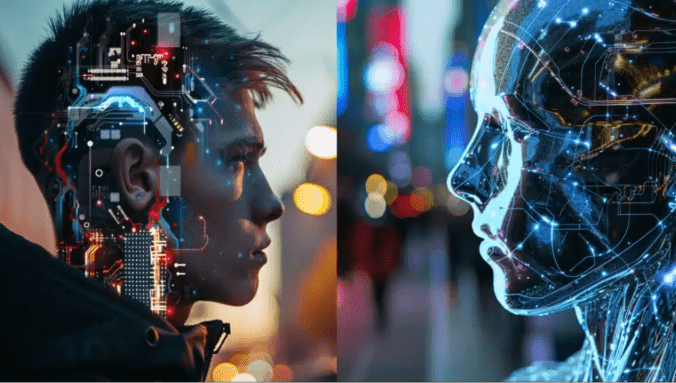As technology becomes more pervasive in every aspect of life, cybersecurity has become a cornerstone of the modern digital era. The increased reliance on connected systems, data-driven platforms, and remote work environments has created unprecedented opportunities—and risks. Cybersecurity is not just about protecting data; it is about ensuring the resilience of digital systems that power businesses, governments, and everyday lives. This article explores the critical challenges and innovative solutions shaping cybersecurity in the digital age.
Understanding the Importance of Cybersecurity
Protecting Digital Assets
In the digital economy, data is the new currency, powering innovation, decision-making, and services. Cybersecurity is the first line of defense against data breaches, ensuring that sensitive information such as personal identification, financial records, and trade secrets is secure.
For instance, the 2018 Facebook-Cambridge Analytica scandal, where personal data of millions of users was improperly shared, showcased the far-reaching consequences of weak cybersecurity practices. Robust systems with encryption, data masking, and access controls can prevent such incidents.
Ensuring Business Continuity
Business operations today depend heavily on digital systems. Cyberattacks like ransomware and DDoS attacks can cripple an organization, halting workflows, cutting off communication, and causing financial losses. Companies that prioritize cybersecurity—through disaster recovery plans, regular backups, and real-time monitoring—are better prepared to recover quickly and minimize the impact of such attacks.
Trust and Compliance
Customers and stakeholders demand accountability in how organizations manage their data. Compliance with regulations like the General Data Protection Regulation (GDPR), California Consumer Privacy Act (CCPA), and Health Insurance Portability and Accountability Act (HIPAA) is not just a legal requirement but a trust-building measure. Adopting cybersecurity best practices ensures both regulatory compliance and customer confidence.
The Challenges of Cybersecurity in the Digital Age
Sophistication of Cyber Threats
Cybercriminals are increasingly sophisticated, employing AI-powered attacks, fileless malware, and zero-day exploits to evade detection. Tools such as phishing kits and ransomware-as-a-service (RaaS) are sold on the dark web, enabling even novice attackers to deploy advanced threats.
A notable example is the SolarWinds breach, where attackers exploited vulnerabilities in software updates to infiltrate government and corporate networks. Such incidents highlight the need for vigilance and proactive measures.
Expanding Attack Surfaces
The shift to remote work, cloud computing, and the rise of IoT devices has expanded the digital attack surface. Every connected device, from smart home systems to industrial sensors, represents a potential entry point for attackers. Securing this sprawling ecosystem requires a holistic approach that includes device management, network segmentation, and identity verification.
Insider Threats
Insider threats account for a significant portion of cyber incidents. These may be intentional, such as sabotage or data theft by disgruntled employees, or unintentional, such as mistakes by well-meaning staff. For example, a simple misconfiguration of cloud settings can expose vast amounts of sensitive data to the public.
Key Cybersecurity Threats in the Digital Age
Malware
Malware remains a persistent threat, evolving to become more evasive and damaging. Types of malware include:
- Ransomware: Encrypts files and demands payment for their release. High-profile incidents like the 2021 Colonial Pipeline attack disrupted critical infrastructure, highlighting ransomware’s far-reaching effects.
- Adware: Delivers intrusive ads that may also serve as vectors for other types of malware.
- Rootkits: Gain deep access to systems, often remaining undetected for long periods.
Phishing and Social Engineering
Phishing is one of the most common and successful attack methods, using fraudulent communication to steal sensitive information. Whaling, a form of phishing targeting high-level executives, has become particularly prevalent in corporate environments.
DDoS Attacks
Distributed Denial of Service (DDoS) attacks flood a network or service with excessive traffic, rendering it inoperable. Attackers often combine DDoS attacks with other forms of intrusion, creating a layered threat.
Advanced Persistent Threats (APTs)
APTs are prolonged, sophisticated attacks aimed at specific targets. They often involve multiple stages, from initial infiltration to data exfiltration. Governments, defense contractors, and financial institutions are frequent targets.
Solutions to Cybersecurity Challenges
Multi-Factor Authentication (MFA)
MFA is one of the most effective defenses against unauthorized access. By requiring multiple forms of verification—such as passwords, biometric data, or hardware tokens—it significantly reduces the risk of account compromise.
Regular Software Updates and Patch Management
Outdated software is a common vulnerability. Regularly updating systems and applying patches closes security gaps, reducing the risk of exploits. Automated patch management systems help ensure consistency across devices.
Endpoint Security
With the rise of remote work, securing endpoints such as laptops, smartphones, and IoT devices is critical. Solutions like Endpoint Detection and Response (EDR) and Mobile Device Management (MDM) provide comprehensive protection.
Threat Intelligence and Monitoring
Proactive monitoring tools, such as Security Information and Event Management (SIEM) systems, aggregate and analyze data to detect anomalies. Advanced tools can provide real-time insights into potential threats, allowing organizations to respond quickly.
Employee Awareness and Training
Since human error is a leading cause of security breaches, regular training programs are essential. Simulated phishing campaigns, workshops, and ongoing education empower employees to identify and mitigate risks.
Emerging Technologies in Cybersecurity
Artificial Intelligence and Machine Learning
AI and ML are transforming cybersecurity by automating threat detection, predicting attack patterns, and improving response times. For instance:
- Anomaly Detection: Identifies deviations from normal behavior, flagging potential threats.
- Behavioral Analytics: Monitors user activity to detect compromised accounts or insider threats.
- Automated Incident Response: Uses AI to neutralize threats in real-time.
Blockchain Technology
Blockchain provides a secure, tamper-proof way to store and share information. Its decentralized nature ensures transparency and integrity, making it ideal for applications such as:
- Identity Management: Verifying user identities without relying on centralized databases.
- Secure Transactions: Protecting financial or supply chain operations from fraud.
Quantum Cryptography
Traditional encryption methods may become vulnerable as quantum computing advances. Quantum cryptography, which uses quantum mechanics to create unbreakable encryption, represents the next frontier in secure communication.
Zero Trust Architecture
The Zero Trust model emphasizes that no entity, whether inside or outside the network, should be trusted by default. This approach involves:
- Continuous user authentication.
- Strict access controls based on user roles.
- Network segmentation to limit lateral movement.
The Role of Cybersecurity in Protecting Critical Infrastructure
Industrial Control Systems (ICS)
Critical infrastructure, such as power grids, water supply systems, and transportation networks, relies on Industrial Control Systems (ICS). Cyberattacks targeting ICS can have devastating consequences, from blackouts to public safety risks.
Cyber Resilience Strategies
Resilience involves preparing for, responding to, and recovering from cyber incidents. Key strategies include:
- Incident Response Plans: Detailed protocols for managing breaches.
- Regular Risk Assessments: Identifying and mitigating vulnerabilities.
- Collaboration: Partnerships between governments, private sectors, and international organizations to share threat intelligence.
Challenges in Implementing Cybersecurity Solutions
Budget Constraints
Cybersecurity investments require significant resources, including technology, training, and skilled professionals. SMEs often struggle to allocate sufficient funds, leaving them vulnerable.
Balancing Security and Usability
Striking the right balance between security measures and user convenience is a persistent challenge. Overly restrictive policies may frustrate users, while lenient policies may expose systems to risks.
Rapidly Evolving Threat Landscape
Attackers continuously adapt their tactics, necessitating organizations to stay agile and update their defenses. Threat intelligence and continuous monitoring are vital to staying ahead.
FAQs
What is cybersecurity in the digital age?
Cybersecurity in the digital age focuses on protecting systems, networks, and data from evolving threats, ensuring the integrity, availability, and confidentiality of digital assets.
Why is cybersecurity important?
Cybersecurity is essential for safeguarding sensitive data, maintaining business continuity, complying with regulations, and building trust among stakeholders.
What are the most significant cyber threats today?
Key threats include malware, phishing, DDoS attacks, insider threats, and advanced persistent threats (APTs).
How can businesses strengthen their cybersecurity?
Businesses can implement multi-factor authentication, endpoint security, threat intelligence tools, and employee training programs to enhance their cybersecurity posture.
What technologies are shaping the future of cybersecurity?
Emerging technologies like AI, blockchain, zero trust architecture, and quantum cryptography are revolutionizing the cybersecurity landscape.



